Alveolar Bone Preservation
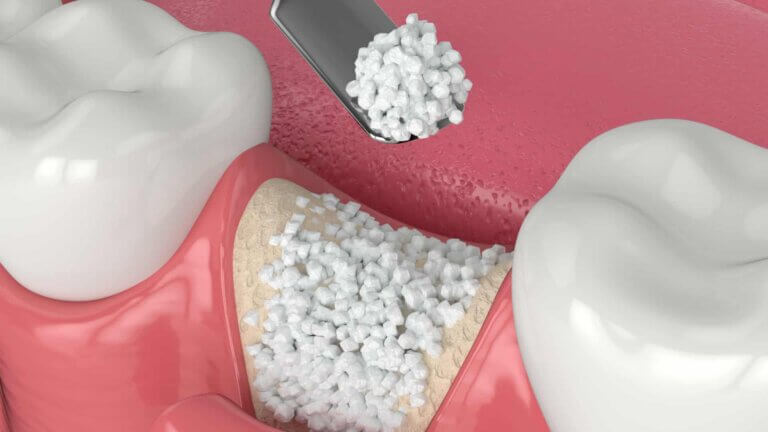
What Is Alveolar Bone Preservation?
Alveolar bone preservation is a dental procedure that involves placing a bone graft material into the socket after a tooth extraction. The aim of this procedure is to preserve as much of the original bone ridge as possible to provide a stable foundation for a future dental implant. By maintaining the height and width of the alveolar bone, the patient is more likely to achieve a successful implant outcome both functionally and aesthetically. This procedure is often recommended for patients who are not yet ready for a dental implant, but are planning to replace a missing tooth in the near future.
Before you deciding on whether Alveolar bone preservation is right for you, there are some things you should know:
- Who Needs Alveolar Bone Preservation?
- What Are the Advantages of Alveolar Bone Preservation?
- What Are the Potential Risks or Complications of Alveolar Bone Preservation?
- What Type of Bone Graft Materials Do You Use?
- How Much Does Alveolar Bone Preservation Cost?
- What Are the Steps in the Alveolar Bone Preservation Procedure?
- Can I Have Alveolar Bone Preservation If I Am Pregnant?
- How Long Does Alveolar Bone Preservation Last?
If you have any further questions about Alveolar bone preservation or other dental services offered at Atlas Dental, please contact us.

Free phone consultation
Have questions about Alveolar Bone Preservation? Schedule a free phone consultation with our Toronto dentist.

5 star google reviews
Our patients love us! See for yourself why more and more people are choosing Atlas Dental for Alveolar Bone Preservation.

Book In Person Consult Online
Book an in-person consult to discuss your Alveolar Bone Preservation case.
Who Needs Alveolar Bone Preservation?
Alveolar bone preservation is a beneficial procedure for patients who are considering dental implant treatment in the future. Some of the common scenarios where a dentist may recommend alveolar bone preservation include:
- Multi-rooted teeth with sockets larger than the planned dental implant diameter: When a multi-rooted tooth, such as a molar, is extracted, it can leave a larger socket that may not match the size of the planned dental implant. Alveolar bone preservation can be used to fill this gap and maintain the correct bone height and width.
- Teeth with active dental infections: Active dental infections and abscesses can cause significant bone loss around the affected tooth. Alveolar bone preservation can help prevent further bone loss and help regrow lost bone so that a stable bone base can be obtained for a future dental implant.
- Situations where a dental implant cannot be placed right away: In some cases, such as when a patient requires additional bone grafting or sinus lift procedures, a dental implant may not be able to be placed immediately. Alveolar bone preservation can help maintain the bone structure and increase the chances of a successful implant placement in the future.
- When a patient cannot afford a dental implant immediately but would like to preserve bone for a future dental implant: Dental implant therapy can cost more than $5000 per tooth depending on the surgical requirements. Alveolar bone preservation can be a viable option for patients who want to preserve their bone structure for a future dental implant but cannot afford the implant at the time of tooth extraction.
- Patients with a history of significant bone loss: Patients with a history of significant bone loss in the jaw, such as from periodontal disease, can benefit from alveolar bone preservation to prevent further bone loss and maintain the bone structure.
In summary, alveolar bone preservation can be recommended in various situations to preserve the bone structure for a future dental implant and increase the chances of a successful implant outcome. If you have further questions about alveolar bone preservation, please contact us.
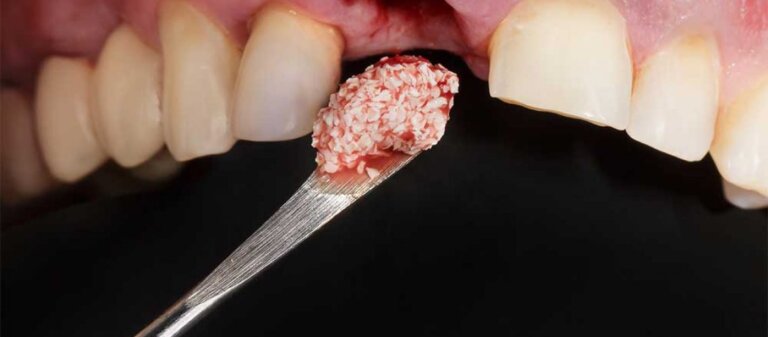
What Are the Advantages of Alveolar Bone Preservation?
Alveolar bone preservation offers several advantages for patients who require tooth extractions and plan to have dental implants in the future. Some of the benefits of alveolar bone preservation include:
- Maintains bone volume and height: Alveolar bone preservation helps maintain the original height and width of the alveolar bone ridge after tooth extraction, which can prevent bone loss and help preserve the surrounding teeth’s position.
- Improves aesthetics: By maintaining the bone volume, alveolar bone preservation can provide a better aesthetic result, particularly in the front teeth area, by preventing the gum from receding and exposing the tooth root.
- Increases implant success rate: A stable bone structure is essential for the success of a dental implant. Alveolar bone preservation can improve the chances of a successful implant placement by providing a stable base for the implant.
- Reduces the need for additional bone grafting: When the bone structure is well-preserved, additional bone grafting procedures such as sinus lifts, may not be necessary during the implant placement process, reducing the need for additional surgery and cost.
- Shortens the implant treatment timeline: By preserving the bone structure, alveolar bone preservation can shorten the implant treatment timeline by allowing for faster implant placement and reducing the overall recovery time.
What Are the Potential Risks or Complications of Alveolar Bone Preservation?
Alveolar bone preservation is a safe and predictable procedure, but like any medical intervention, it carries some potential risks and complications. Some of the risks and complications of alveolar bone preservation include:
- Dental infection: As with any surgical procedure, infection is a potential risk. Proper preoperative and postoperative care, including the use of an antibiotic before surgery, can significantly reduce the risk of infection.
- Rejection of the bone graft material: In some rare cases, the body may reject the bone graft material, which can lead to inflammation, discomfort, and loss of the bone graft.
- Graft material displacement: The bone graft material may shift or move from its original position, leading to an uneven bone surface. Proper adherence to surgical post-operative instructions will ensure that the bone graft remains stable as it heals.
- Pain and swelling: Pain and swelling are common after the procedure, but they can be managed with pain medication and proper post-operative care.
- Nerve damage: In rare cases, the bone graft material may migrate to areas close to dental nerves, which can cause nerve damage, including symptoms of numbness, tingling, or even loss of sensation.
It is essential to discuss the potential risks and complications of alveolar bone preservation with your dentist before the procedure. With proper preoperative planning and postoperative care, the risk of complications can be significantly reduced.
What Type of Bone Graft Materials Do You Use?
There are different types of bone graft materials that can be used for alveolar bone preservation. Here are some of the most common types:
- Allograft: This type of bone graft material is derived from human donors and is the most popular type of bone graft used. It is sterilized using high heat, pressures and temperatures to remove cells and minimize the risk of disease transmission. Allograft bone is a safe and effective option for alveolar bone preservation.
- Xenograft: This type of bone graft material is derived from animal sources, such as cow (bovine) or pig (porcine) bones. The animal bone is processed to remove cells and minimize the risk of disease transmission. Xenograft bone is also a safe and effective option for alveolar bone preservation.
- Autograft: This type of bone graft material is taken from the patient’s own body, usually from the hip or the jaw. It is considered the gold standard of bone grafting materials since it is the patient’s own tissue and has a lower risk of rejection. However, a second surgical site is required to harvest the bone and is often avoided when Allograft sources are available.
- Alloplasts. This deals with synthetic materials, such as calcium phosphate or calcium sodium phosphosilicate (Bioglass).
Patients should discuss the advantages and disadvantages of each option with their dentist to determine the best option for their individual needs. If you have further questions about alveolar bone preservation, please contact us.
Cost of Alveolar Bone Preservation
The cost of Alveolar bone preservation is $450 plus Dental materials expense (approximately $300). In addition, you should also consider additional costs related to tooth removal ($307) and dental implants ($4155 to 5212). The codes relevant to Alveolar bone preservation in the Ontario Dental Association’s Suggested Fee Guide appear as follows:
Alveolar Bone Preservation – Allograft
- 72421 – First tooth: $450 + Dental Materials Expense (approximately $300)
The Ontario Dental Association’s Suggested Fee Guide is a proposed fee structure that dentists in Ontario may or may not follow. Please consult with your dentist about fees before going ahead with treatment.
Alveolar bone preservation is usually considered a supplementary service by dental insurance plans and may or may not be covered by your dental insurance. Be sure to find out from your dental insurance plan provider how much you are eligible for before going ahead with dental treatment. Your dentist can help you submit a predetermination to your dental insurance.
For patients without dental insurance, Atlas Dental is pleased to offer dental financing through Dentalcard. Affordable payment plans start at 7.95% for terms of 6 months to 6 years. To learn more about Dentalcard dental treatment financing, follow this link.
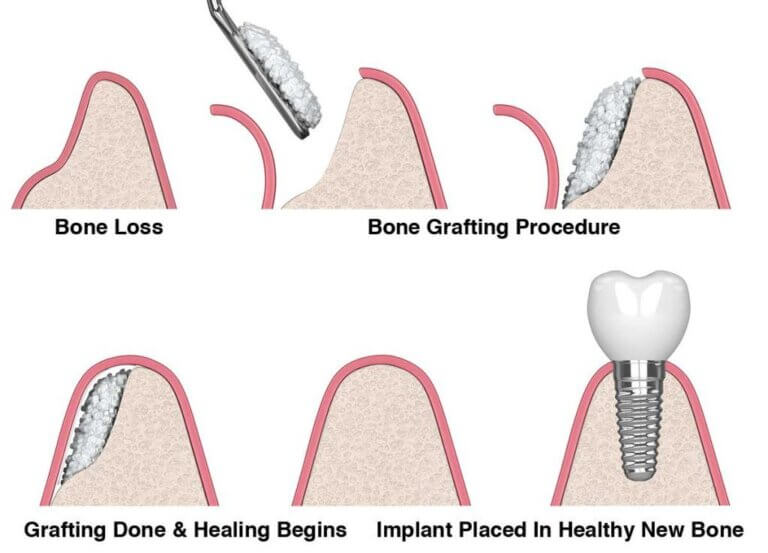
What Are the Steps in the Alveolar Bone Preservation Procedure?
The alveolar bone preservation procedure typically involves the following steps:
- Evaluation and Preparation: The dentist will evaluate the tooth that requires removal and the need for alveolar bone preservation using dental x-rays and an intra-oral examination. Sometimes, a dental implant can be immediately placed in the tooth socket after dental removal; your dentist will advise you if this is possible. The dentist will almost always prescribe antibiotics before the procedure to help fight dental infection and ensure the best chance for bone graft healing. Please review these pre-operative instructions before your visit.
- Tooth Extraction: The dentist will remove the damaged or decayed tooth, being careful not to damage the surrounding bone and soft tissue.
- Cleaning and Debridement: After the tooth is removed, the dentist will thoroughly clean and debride the socket to remove any remaining debris or infection.
- Graft Placement: The dentist will place the bone graft material into the socket to fill the void left by the extracted tooth. The graft material may be sourced from the patient’s own bone or from a donor source. Synthetic materials may also be used.
- Closure: The dentist will close the gum tissue over the socket using resorbable sutures (usually 4-0 chromic gut). In some cases, a collagen membrane may be placed over the graft material to hold the bone graft particles in place and to aid in healing.
- Post-operative Care: After the procedure, the patient will be given post-operative instructions. The patient will need to return to the dentist for follow-up appointments to monitor healing progress and to plan for the future dental implant. A special 3D x-ray called a CBCT scan may be required to properly assess the bone for dental implant treatment.
The alveolar bone preservation procedure is a straightforward and effective way to maintain as much bone as possible after a tooth extraction, which can provide a solid foundation for a future dental implant. If you have further questions about alveolar bone preservation, please contact us.
Can I Have Alveolar Bone Preservation If I Am Pregnant?
Pregnancy is an exciting time in a woman’s life, but it can also be a time of increased health concerns. Many women may wonder if it is safe to undergo dental surgical procedures such as alveolar bone preservation during pregnancy. Generally speaking, dental surgical procedures like alveolar bone grafts should be avoided until after the birth of the baby.
If the procedure is deemed necessary during pregnancy, it is typically recommended to perform it during the second trimester. This is because the first trimester is a critical period of fetal development and the third trimester can be uncomfortable for the patient. Additionally, the second trimester is generally considered a safer time for dental procedures as the baby’s organs are well developed and the risk of miscarriage is reduced. If alveolar bone preservation is deemed necessary during pregnancy, it is important to consult with both your dentist and obstetrician before proceeding. Please contact us for more information.
How Long Does Alveolar Bone Preservation Last?
Alveolar bone preservation is designed to maintain the bone structure after tooth extraction, providing a stable foundation for a future dental implant. Generally, dentists ask that patients wait for 4 to 6 months of bone and gum healing before proceeding with the next stage in treatment, the dental implant placement. However, some patients may choose to wait longer. The duration of the preservation largely depends on the patient’s oral health, the bone graft material used, and the patient’s commitment to good oral hygiene. Please contact us for more information.
We also think you’ll like…
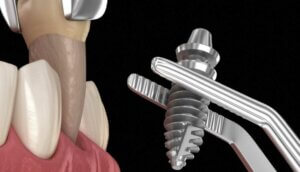
ACE Surgical Dental Implants
ACE Surgical Dental Implants What Are ACE Surgical Dental Implants? ACE Surgical is a dental implant company that specializes in providing innovative solutions for dental
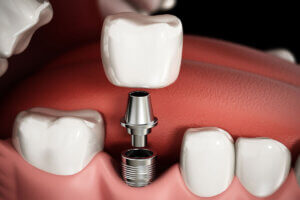
Fallen Out Dental Implant Crown
Fallen Out Dental Implant Crown What Is A Fallen Out Dental Implant Crown? Dental implant crowns are a popular and effective solution for replacing missing

Oral Conscious Sedation
Oral Conscious Sedation What Is Oral Conscious Sedation? Dental anxiety and fear are common concerns that prevent many individuals from seeking the dental care they
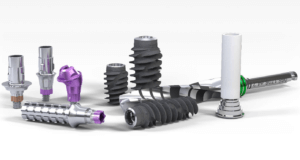
Straumann Dental Implants
Straumann Dental Implants What Are Straumann Dental Implants? Straumann is a well-established and globally recognized dental implant company that specializes in providing innovative solutions for
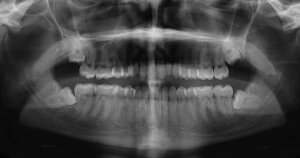
Wisdom Tooth Removal Consent Form
Wisdom Tooth Removal Consent Form There will be some pain, swelling and bleeding following a tooth extraction. This may require pain-relieving medication. Bleeding is usually
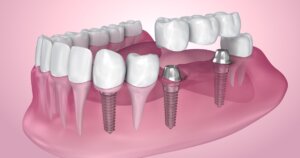
Dental Implant Crown
Dental Implant Crown What Is A Dental Implant Crown? A Dental Implant Crown is a crucial component of a dental implant, which is a permanent

